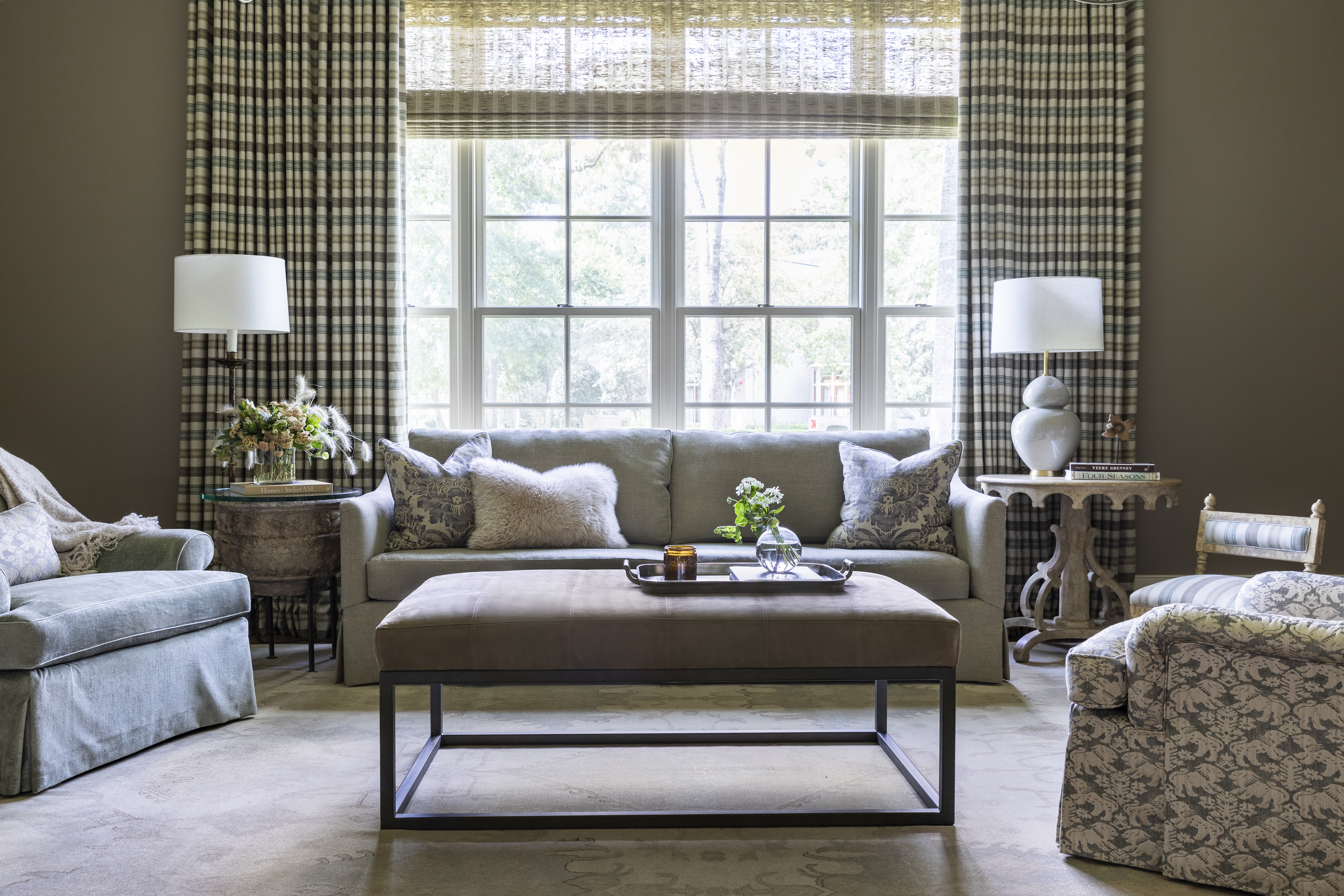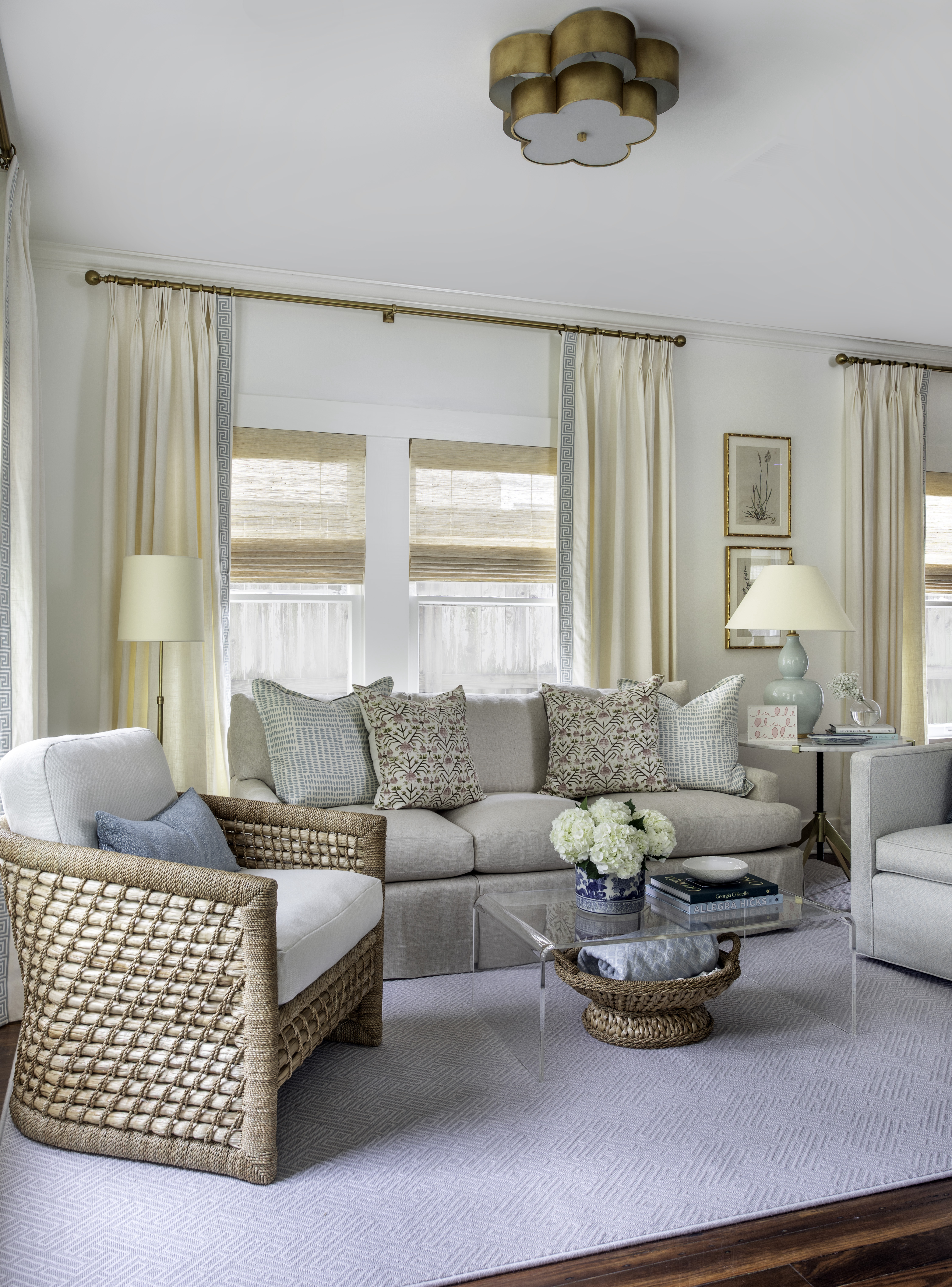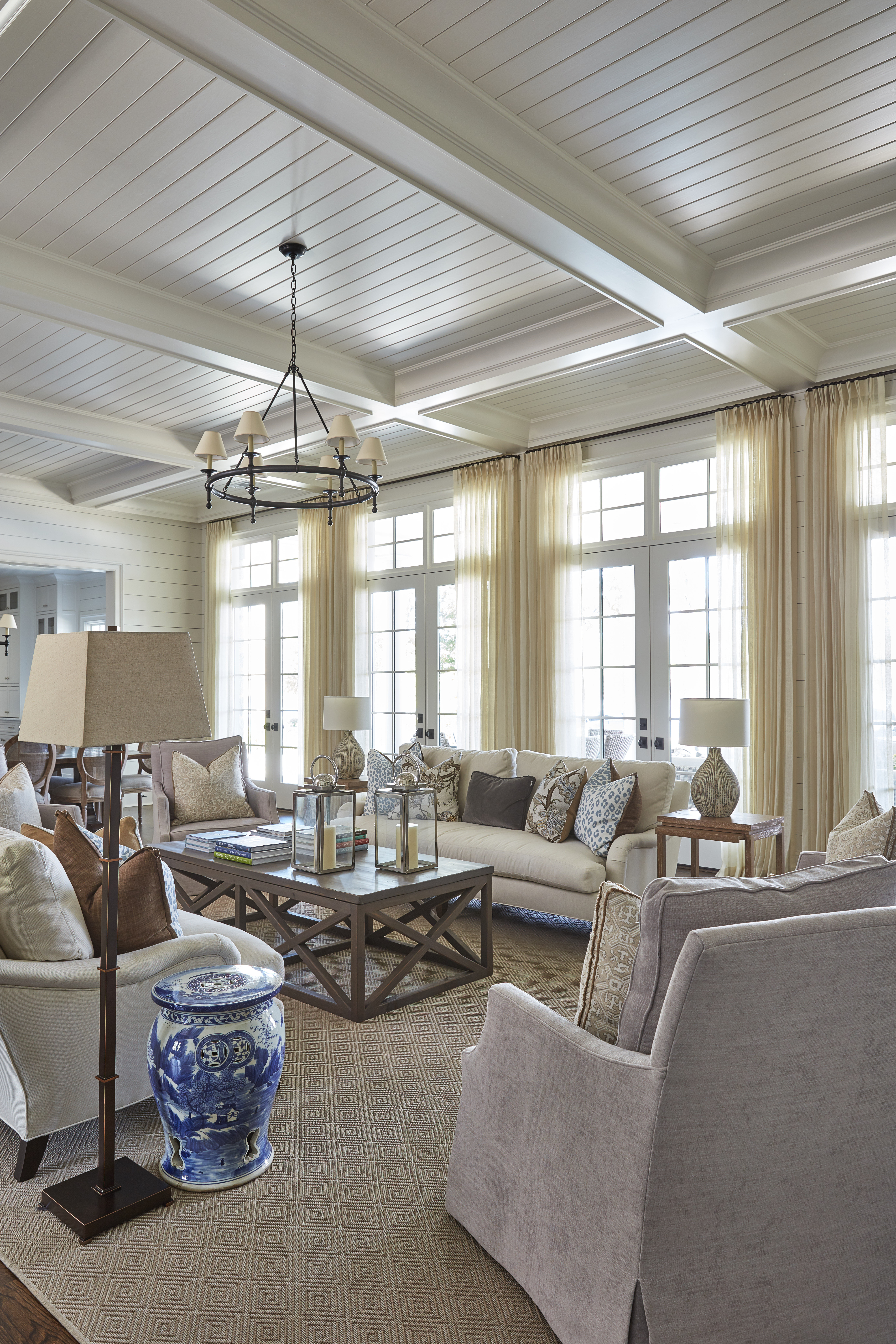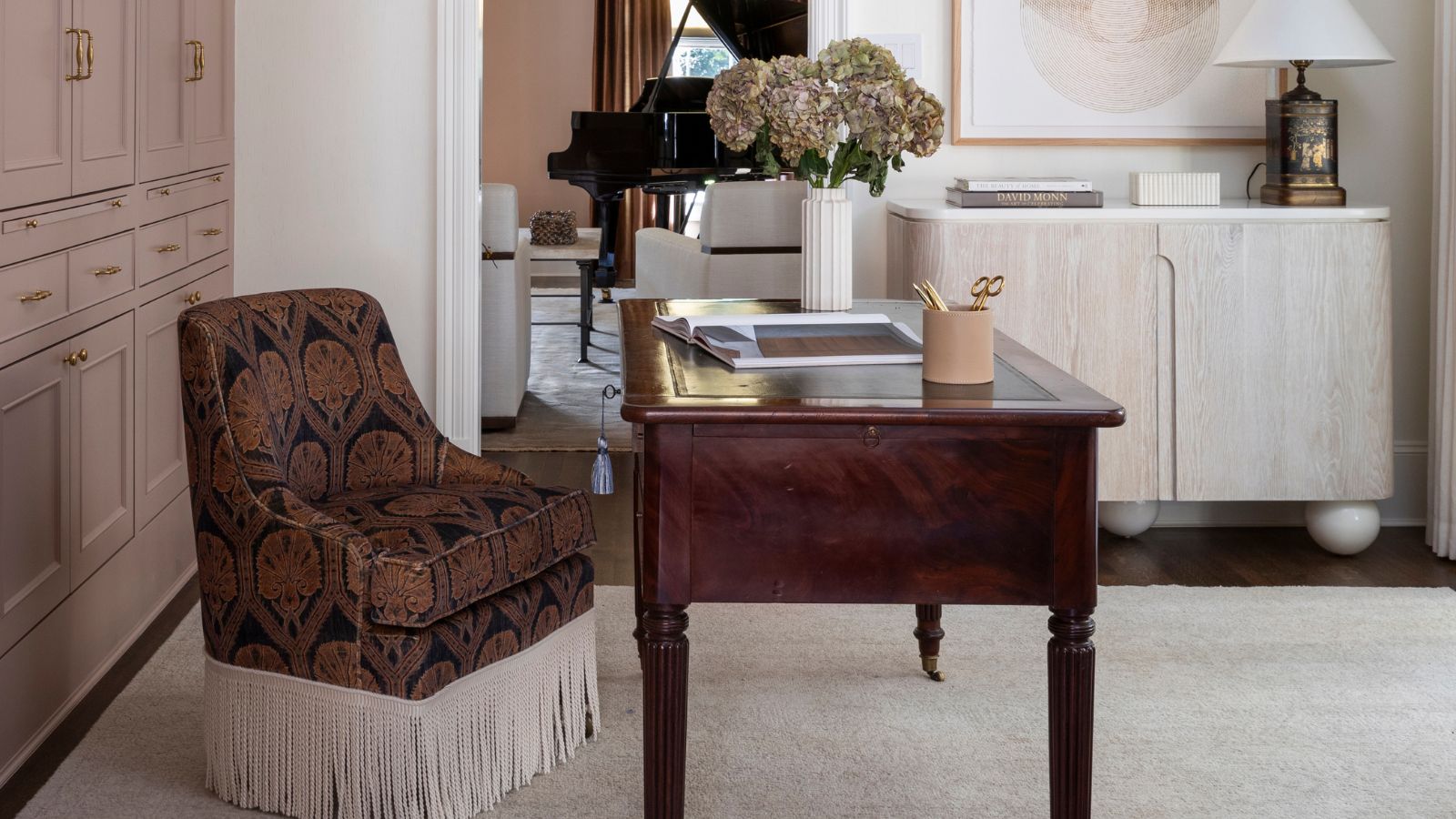How to choose curtains for a living room – the strategies designers use
Discover how to choose curtains for the living room. These are the top tips from the professionals


Wondering how to choose curtains for the living room? Much of our time at home is spent in this space, so it’s an important decision as part of creating an interior to love now and into the future.
Window treatment ideas must complement the room’s style, whether that’s classic or contemporary, and they have a practical aspect, as well an aesthetic one, so your curtain ideas must fulfill all your needs.
In this guide, designers and curtain experts explain how to choose curtains for a living room that will have lasting style to make the task of selecting a pleasure.

How to choose curtains for a living room
Where to start when choosing curtains that work with your living room ideas? ‘People should think about the practicality first – are the window treatments purely for the aesthetics?’ says interior designer Katie Davis of Katie Davis Design. ‘Do you need them for privacy? Does the room get a lot of light and shine a glare on the television? Also, think about the furniture and flow placement in a living area – you may need to do shades instead of drapes if a sofa or walkway is in that area. Think about how you live first and then play with the color and pattern.’
Below, we detail how to choose curtains for the living room.

Decide between stationary and opening curtains
Consider what the function of your living room curtains needs to be. Do they need to be opened or closed, or will they remain stationary?
If drapery doesn’t need to close? ‘Consider stationary panels on a beautiful French return rod,’ suggests Maggie Griffin, founder and principal designer of Maggie Griffin Design. These rods have a beautifully simple design with no finials – the rod simply returns to the wall at each end. ‘The panels should coordinate with the other fabrics in the room, and provide softness to the space,’ adds Maggie.
Bear in mind the fabric widths that will be required depending on what type of curtains you opt for. ‘If you want the curtains to remain decorative and stationary, then curtain width is not as much of an issue, however, if you want to be able to open and close the curtains, it’s best to make sure there is enough width to cover the entire window,’ says Kelly Simpson, senior director of design & innovation at Budget Blinds, experts in blinds, shades, shutters, and drapes.
Focus on light control and privacy
Window treatments need to be chosen with the requirements for light control and privacy in mind. Shades or blinds may fulfill these roles while the curtains with which they are combined to dress the window are purely decorative, but equally, curtains may need to contribute.
If you want to let light into the living room but gently diffuse it, think sheers or light cotton curtains, or go for slightly heavier linens. ‘For a more traditional living room, we opted for sheers to give the space softness and height and still let light in,’ says Aileen Warren of Houston-based Jackson Warren Interiors.
To create privacy or to darken a living room, think of heavier fabrics such as velvet. Blackout lining for curtains will also block light effectively.
Consider fit
Ready-made curtains come in standard sizes, which may provide a good fit for your windows. ‘If you have oversized windows, consider investing in custom drapery made to fit the exact measurements of the window,’ recommends Kelly Simpson.
Of course, going bespoke can have other advantages. ‘Draperies allow you to create a gorgeous and customized style that instantly elevates a room,’ says Kelly.

Take color and pattern into account
Think of the other elements in the space when choosing curtain colors for any room, including the living room.
‘Curtain color completely depends on the room – the rug, the lighting, the furniture,’ says interior designer Aileen Warren. Use a color wheel to plan the palette for the room, including the curtains, successfully.
Consider patterns as well as plains for the interior. ‘Pattern is great when you want to add visual interest to a room because maybe your upholstery is solid or your client likes a bit of whimsy,’ says Aileen.
‘For a more traditional den, we chose a subtle stripe fabric to play on pattern and liven up a solid sofa.’
You may want the curtains to be barely there, on the other hand. ‘For a project with a particularly amazing view, we did white linen drapes so they would disappear,’ says Aileen.
Which type of curtains are best for a living room?
The best type of curtains for a living room should be determined according to practical factors and aesthetic ones. The need for light control and privacy will influence the fabric choice: sheers and semi-sheers will let light in but filter it; heavy fabrics and blackout linings will block light and stop the room from being overlooked when the curtains are drawn.
Curtain color and whether they’re patterned or plain should take the color of walls, rugs, furniture, and other furnishings into account, and will also depend on whether you want the curtains to be a focal point or more understated.
Budget will also influence choice, especially if the room has a lot of windows. ‘A good budget saver is plain, neutral linen and adding a leading edge trim,’ suggests Aileen Warren of Jackson Warren Interiors.
Should curtains in the living room touch the floor?
Living room curtains should touch the floor for the most stylish effect. This is the case even if the window itself doesn’t extend to the floor. If furniture placement or a walkway through the room makes this difficult, opt for shades as an alternative rather than short curtains which can have a dated look in a living room.
There are two other alternatives to curtains that touch the floor. If they need to be opened and closed frequently, curtains that hover a little above the floor can be preferable. And for a luxurious look, you might opt for curtains long enough to puddle on the floor. Bear in mind that these take arranging and will need more attention when it comes to caring for curtains.
Sign up to the Homes & Gardens newsletter
Design expertise in your inbox – from inspiring decorating ideas and beautiful celebrity homes to practical gardening advice and shopping round-ups.

Sarah is a freelance journalist and editor. Previously executive editor of Ideal Home, she’s specialized in interiors, property and gardens for over 20 years, and covers interior design, house design, gardens, and cleaning and organizing a home for Homes & Gardens. She’s written for websites, including Houzz, Channel 4’s flagship website, 4Homes, and Future’s T3; national newspapers, including The Guardian; and magazines including Future’s Country Homes & Interiors, Homebuilding & Renovating, Period Living, and Style at Home, as well as House Beautiful, Good Homes, Grand Designs, Homes & Antiques, LandLove and The English Home among others. It’s no big surprise that she likes to put what she writes about into practice, and is a serial house renovator.
-
 The rumours are true, the NYC trend for fringes and trimmings is actually happening – they are the secret weapon for making a room look expensive
The rumours are true, the NYC trend for fringes and trimmings is actually happening – they are the secret weapon for making a room look expensiveA trim or a ruffle is the finishing touch that can take a scheme from ordinary to the extraordinary in an instant
By Jennifer Ebert Published
-
 How to grow impatiens – garden experts reveal the secrets to growing this shade-tolerant, sparkling summer plant
How to grow impatiens – garden experts reveal the secrets to growing this shade-tolerant, sparkling summer plantBoth 'Busy Lizzie' and 'New Guinea' impatiens can thrive in shady yards
By Ellen Wells Published